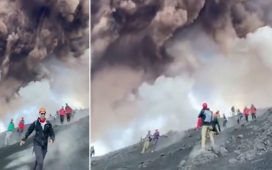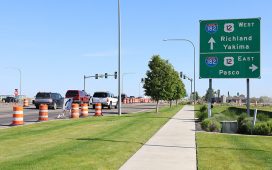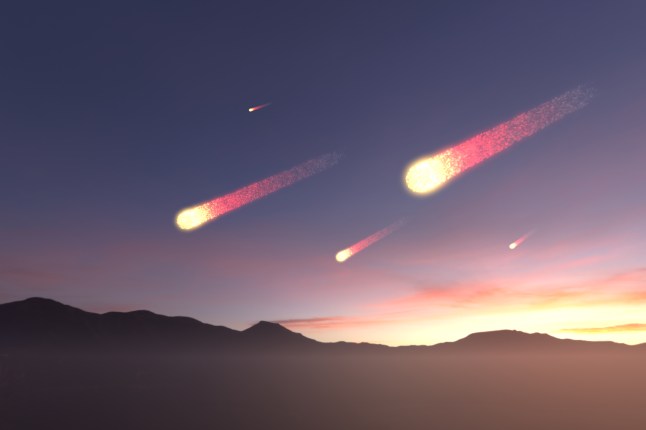
Astronomers have discovered six asteroids that are ‘potentially dangerous to Earth’. But is there a reason to panic?
Venus, our celestial next-door neighbour, is hiding possibly hundreds of unpredictable and hard-to-see asteroids, according to a new study.
These space rocks are ‘co-orbitals’, so orbit the Sun in line with Venus from a safe distance.
The researchers wrote in a paper that while there’s a slim chance the asteroids will collide with Venus, them being co-orbitals ‘does not protect them from encountering Earth’.
Of these ‘six invisible threats’, three named 2020 SB, 524522, and 2020 CL1 ‘have a severe risk of collision’ as their orbits allow them to approach Earth within 0.05 astronomical units (about 4,650,000 miles).
While that sounds far, that’s close enough for them to be considered potentially hazardous asteroids.
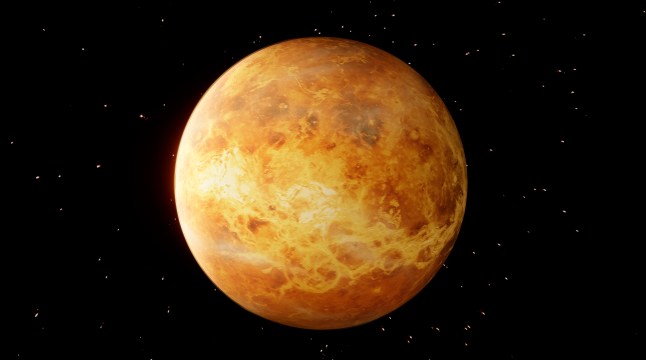
Two of the asteroids, 2020 SB, 524522, are up to 1,500 feet in diameter, about the same size as a football field, while 2020 CL1 is nearly 2,000 feet.
Of the trio of city-killers, the researchers said: ‘these objects could form craters with diameters from 2.2 to 3.4km, and release energies at impact from 1.5 to 4.1 × 102 megatons of TNT, which is more than enough to large cities.’
They added that this would be an eight on the Torino scale, a tool for communicating how concerned people should be about space rocks, ‘capable of causing localized destruction for an impact over land or possibly a tsunami if close offshore’.
By comparison, the infamous ‘city killer’ asteroid, 2024, YR4, that space officials briefly believed could smack Earth in 2032 reached three before no longer being seen as a threat.
One reason is because the asteroid has a path so clear scientists can even predict what time it will come close to Earth.
Valerio Carruba from the University of São Paulo in Brazil, who led the study, says the Venus asteroids are too unpredictable with only a small gravitational change or other force enough to nudge them towards Earth.
The brightness and glare of the Sun make anything whizzing around Venus hard to see through a telescope. The Rubin Observatory in Chile would have about four weeks to spot them.
The authors added: ‘Low-e [low eccentricity] Venus co-orbitals pose a unique challenge because of the difficulties in detecting and following these objects from Earth.’
Eccentricity refers to how round an orbit is, with a perfectly circular one having an eccentricity of zero. The smaller the orbit, the trickier they are to see.

What doesn’t help is their ‘highly chaotic’ orbits, ‘with Lyapunov times of the order of 150 years’, the authors said.
Lyapunov time is how long an object’s orbit takes to become completely unpredictable – so looking at the asteroids today won’t tell us much about what its orbit will look like in 150 years.
The researchers got around this by ‘cloning’ the rocks onto a simulated solar system and seeing where they wound up after 36,000 years.
They discovered that of 20 identified co-orbitals, six could become possibly hazardous asteroids in the next 12,000 years.
They said: ‘There is a range of orbits with eccentricity
Chris Lintott, a professor of astrophysics at the University of Oxford, would be the first to admit this all sounds scary.
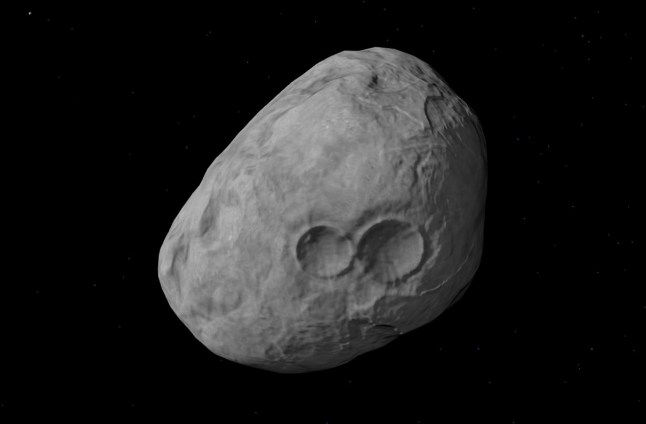
Speaking to Metro, he said: ‘There’s absolutely no need to panic – these asteroids are safely in their orbits millions of miles away and pose no imminent threat to Earth.’
The odds that a city-destroying asteroid will hit Earth is about 1% per century, while no rocks larger than a kilometre are expected to get anywhere near us for at least the next 1,000 years.
Planetary defence and space officials have plans in place in the event an asteroid does pose a threat, including smashing a spacecraft into it or shooting a pulse of radiation.
Every close call with these titanic rocks, however scary, gives officials more data to work with to keep us safe.
In the last year, 154 asteroids larger than a kilometre drifted closer to Earth than the Moon, according to Nasa.
Linott added: ‘We are getting better at understanding where asteroids that do hit the Earth come from though, and with new telescopes we’re more likely than ever to have advanced notice of a threat.
‘Despite these new ideas, you’ve never been safer from an asteroid dropping on you than you are now.’
Get in touch with our news team by emailing us at webnews@metro.co.uk.
For more stories like this, check our news page.
MORE: Twist in search for mysterious ‘Planet Nine’ in the dark depths of our solar system
MORE: Saturn in Aries for the first time since 1999 will impact these five star signs most
MORE: Nasa warns of huge solar flares that could cause blackouts on Earth


